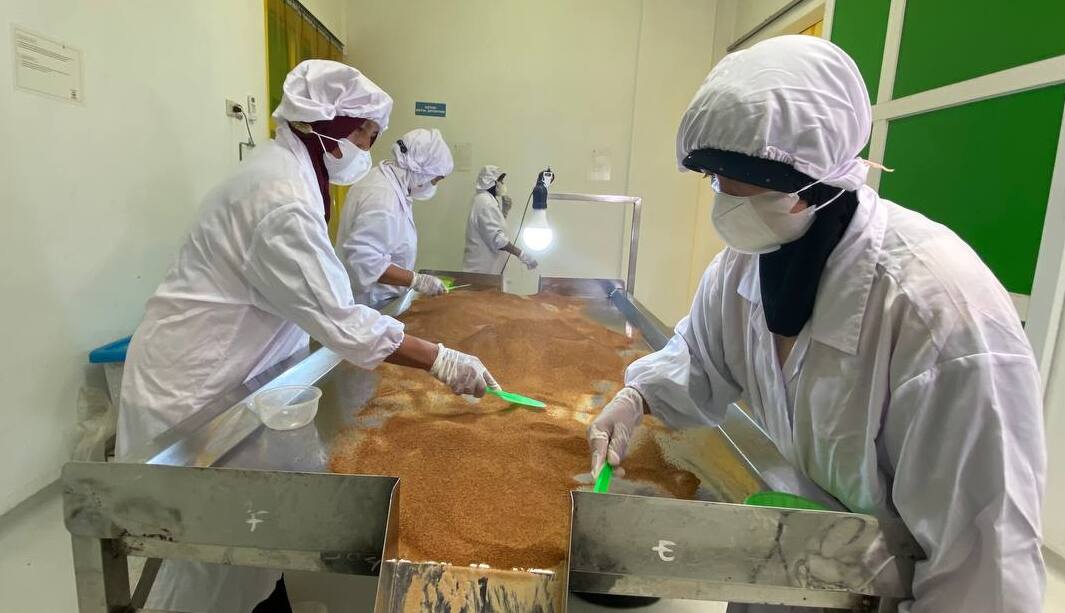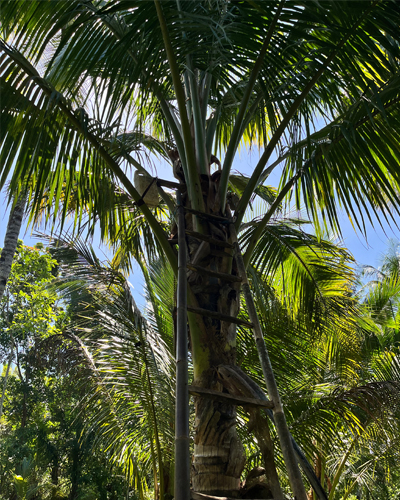Blog
Get used to reading to the end
Ensuring Hygiene in Coconut Sugar Production

A look into the stringent standards that guarantee the purity and safety of this popular natural sweetener.
Coconut sugar has surged in popularity as a healthier alternative to refined white sugar. Its caramel-like taste and lower glycemic index have made it a favorite in health-conscious circles. But have you ever wondered what it takes to produce this golden-hued sweetener? The journey from the coconut palm to your pantry involves a meticulous process governed by strict hygienic standards to ensure a final product that is not only delicious but also safe for consumption.
This blog post delves into the standard operating procedures (SOPs) for the hygienic production of coconut sugar, a process that blends traditional methods with modern food safety principles.
The Foundation of Quality: Hygienic Sap Collection
The process begins at the source: the coconut palm. The quality of the final coconut sugar is intrinsically linked to the hygiene practiced during the collection of the coconut sap, also known as "neera" or "toddy."
- Sanitation is Paramount: Before a single drop of sap is collected, tappers must ensure their tools, including sickles and collection containers, are thoroughly cleaned and sanitized. This prevents microbial contamination from the outset. Collection containers, traditionally made of bamboo, are now often replaced with food-grade plastic containers that are easier to clean and less prone to bacterial growth.
- Swift and Frequent Collection: Coconut sap is a delicate substance that begins to ferment rapidly once collected. To minimize this, tappers collect the sap twice a day, once in the early morning and again in the late afternoon. The collected sap is then immediately transported to the processing facility.
- Preventing Contamination: Tappers are trained to cover the collection containers to prevent insects, leaves, and other debris from falling into the fresh sap. Some modern methods even employ chilling devices at the point of collection to keep the sap fresh and unfermented.
The Heart of Production: Controlled Processing
Once the fresh sap reaches the processing facility, it undergoes a series of carefully controlled steps to transform it into the granular sugar we know. Adherence to Good Manufacturing Practices (GMP) is crucial at this stage.
- Straining and Filtration: The first step is to strain the sap through clean cloths or fine mesh screens to remove any impurities that may have found their way in during collection and transport.
- Controlled Boiling: The filtered sap is then poured into large, clean woks or evaporating pans and boiled over a controlled heat source. This process, known as "caramelization," reduces the water content and concentrates the sugars. Constant stirring prevents scorching, which can affect the taste and quality of the final product. The temperature and duration of boiling are critical control points to achieve the desired consistency and color.
- Crystallization and Granulation: As the water evaporates, the liquid thickens into a syrup. Once it reaches the right consistency, it is removed from the heat and continuously stirred to induce crystallization. The cooling and stirring process transforms the thick syrup into a solid mass, which is then broken down and ground into granules.
- Drying and Sieving: The granulated sugar is then dried in a controlled environment to achieve the desired moisture content, typically below 2%. This low moisture level is essential for preventing microbial growth and ensuring a longer shelf life. After drying, the sugar is sieved to ensure a uniform particle size and to remove any oversized clumps. Many producers also incorporate magnetic separators during the sieving process to remove any potential metallic contaminants.
Ensuring Safety: Critical Control Points and Quality Assurance
Throughout the production process, Hazard Analysis and Critical Control Points (HACCP) principles are often implemented to identify and mitigate potential food safety hazards.
- Personal Hygiene: All personnel involved in the processing of coconut sugar must adhere to strict personal hygiene standards. This includes wearing clean protective clothing, hairnets, and gloves, as well as regular hand washing.
- Pest Control: The processing facility must have a robust pest control program in place to prevent contamination from rodents and insects.
- Packaging and Storage: The final product is packaged in clean, food-grade materials that protect it from moisture and contaminants. The packaging must be properly sealed and labeled with a production date and batch number for traceability. The storage area should be clean, dry, and well-ventilated to maintain the quality of the coconut sugar until it is dispatched to consumers.




